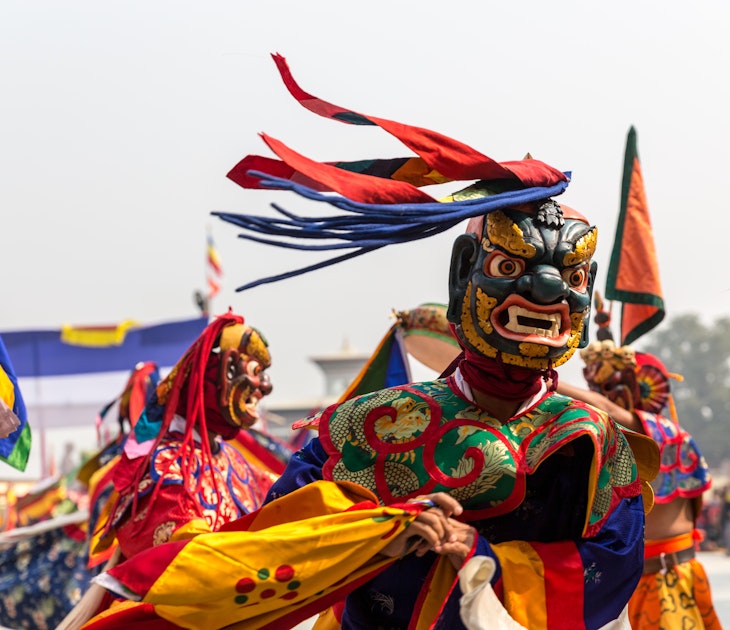

Belize’s forest-clad highlands sit atop Central America’s most extensive cave system, containing some of the largest subterranean passageways and chamber rooms in the western hemisphere. The caves were carved out of limestone by the Chiquibul River, and the watery darkness hosts a variety of resident troglobite cave creatures, as well as the occasional sub-aquatic spelunker. According to legend, the Chiquibul cave system was also the entrance to Xibalba, the macabre Maya underworld.
The place of fright
Xibalba, which translates as 'the place of fright', was home to the most feared Maya deities, the Lord of Death and his evil attendants – ghoulish specialists in disease, starvation, pain, blood-spilling, gut-wrenching and skeleton-transforming. It was here that wayward souls would be confronted with terrifying tests of courage and acumen, including a river of poisonous scorpions, a house of killer jaguars and a game played with balls made of rotating blades.
- placement: fullWidth
- path: articles/in-content-top
- possible size: [970, 250], [970, 90], [728, 90], [300, 250], [320, 50], [1, 1],
- targeting:
{ "url": "journey-into-the-maya-underworld" }
The demon gods of the underworld were eventually outwitted, though not entirely defeated, by the wily protagonists of Maya mythology, the Hero Twins, who overcame Xibalba’s deadly obstacles and avenged their father’s death. Even though the menacing powers of Xibalba were diminished, the Maya continued to offer sacrifices to appease the gods, and for a while, the Maya civilization thrived.
Collapse of the great civilization
Archaeological evidence shows a dramatic increase in cave sacrifices in the late Classic Period, around 900 AD, coinciding with geological evidence of a drought. It is presumed that Maya civilization was undone by a climatic cataclysm, a decades-long drought that first destroyed the agricultural-based economy and then brought down the socio-political system, causing migration from once prosperous and proud cities, famine and death.
- placement: fullWidth
- path: articles/in-content-middle
- possible size: [970, 250], [970, 90], [728, 90], [300, 250], [320, 50], [1, 1],
- targeting:
{ "url": "journey-into-the-maya-underworld" }

The Maya ruler-priests ventured deeper and deeper into the lair of the underworld gods, making ever more elaborate sacrifices in an attempt to stave off the collapse of the great ancient civilization. But eventually, the people dispersed, the forest closed in and the sacred caves lay undisturbed for a millennium.
Modern explorers in the ancient underworld
In the late twentieth century, archaeologists rediscovered the ancient passage to the underworld and the well-preserved remnants of the Maya drought culture, and today, several ceremonial sites in western Belize are open to travelers. Accompanied by a licensed guide, adventurous souls can take day trips into the depths of the caves and examine the relics left behind by the ancient Maya.
The most challenging expedition, Actun Tunichil Muknal (ATM) is a labyrinthine series of caves located east of San Ignacio in the Tapir Mountain Reserve. A swim across a deep clear river pool is necessary to reach the cave entrance. From there, a three-mile hike leads to further underground obstacles: walking through chest-deep water, scaling rocky ledges in the dark, squeezing through narrow cracks in limestone walls and climbing a tall rickety ladder.
- placement: native
- path: articles/in-content-native
- possible size: [f, l],
- targeting:
{ "url": "journey-into-the-maya-underworld" }

In the darkest depths of ATM, there are roomy underground chambers with ornate stalactite and stalagmite formations, countless ceramic shards and broken pots (Maya believed that it was necessary to smash a sacrificial vessel to release the spirit within), and altar places where bloodletting ceremonies occurred (Maya priests offered their own blood by piercing their tongue or foreskin). The climax of the adventure is discovering the bony remains of human sacrifices, including ATM’s central attraction, the Crystal Maiden, a fully intact calcified skeleton of an adolescent female victim.
Barton Creek Cave, also located near San Ignacio, offers a more leisurely visit to the underworld. Explorers can marvel at the naturally wondrous cathedral ceiling and the archaeologically amazing ritualistic remnants from the comfort of their canoe. The Barton Creek Cave includes 10 ledges of known sacrifice sites and skeletal remains of nearly 30 sacrificed humans. Take in the serene and surreal while paddling the mile-long route into the mystical Maya underworld.
Many local tour companies offer trips to ATM and Barton Creek, including Belize Nature Travel (experiencebelize.com) and Pacz Tours (pacztours.net).
This article was updated in June 2017.
- placement: fullWidth
- path: articles/bottom
- possible size: [970, 250], [970, 90], [728, 90], [300, 250], [320, 50], [1, 1],
- targeting:
{ "url": "journey-into-the-maya-underworld" }
Explore related stories

Architecture
The ultimate guide to Tibetan Buddhist monasteries: exploring gompas in the HimalayasNov 22, 2024 • 7 min read



 Local VoicesEverything you need to know about visiting New York in December
Local VoicesEverything you need to know about visiting New York in DecemberNov 25, 2024 • 10 min read
 ActivitiesCopy My Trip: Exploring Ecuador and the Galápagos with Elsewhere
ActivitiesCopy My Trip: Exploring Ecuador and the Galápagos with ElsewhereNov 25, 2024 • 5 min read





